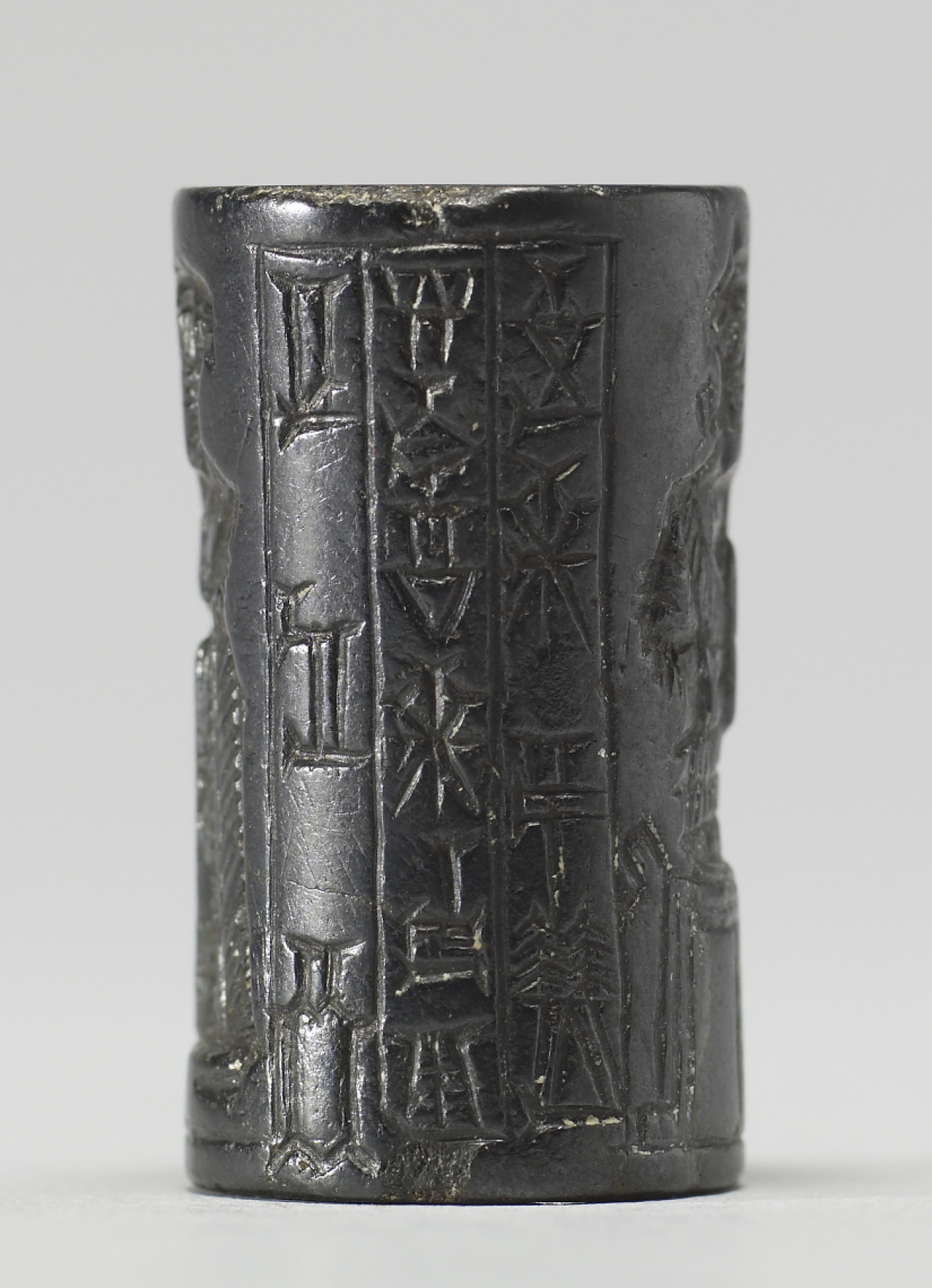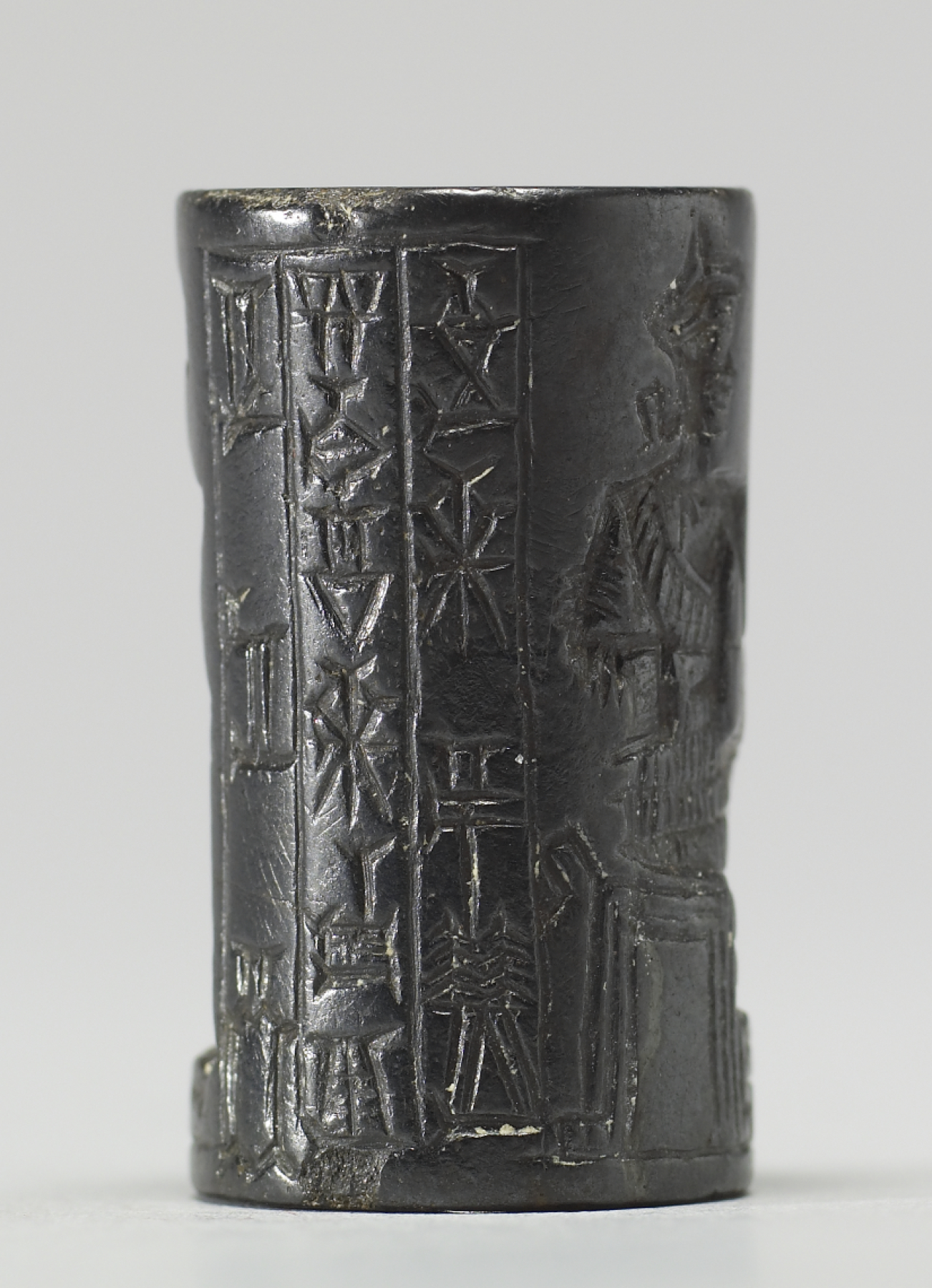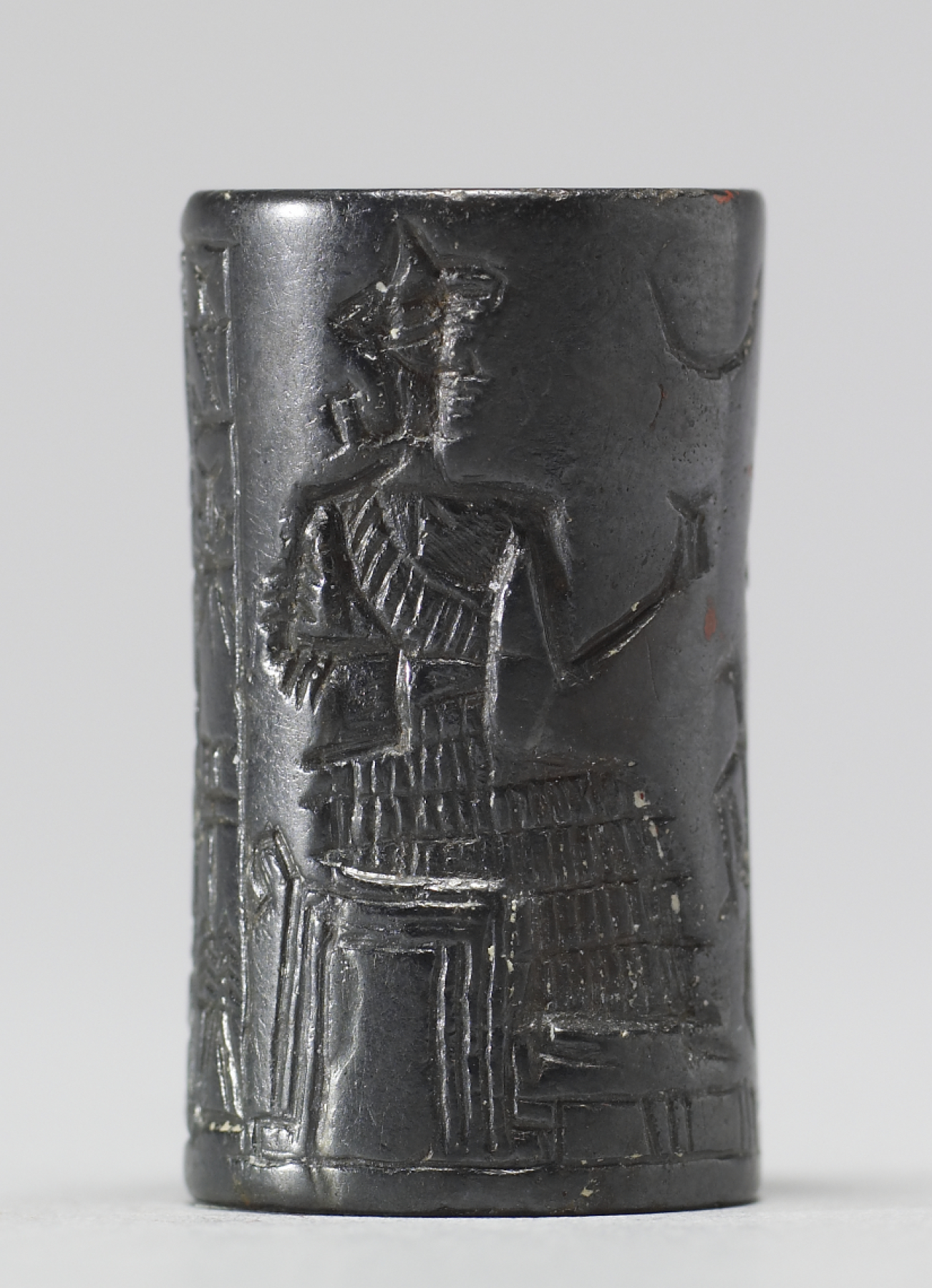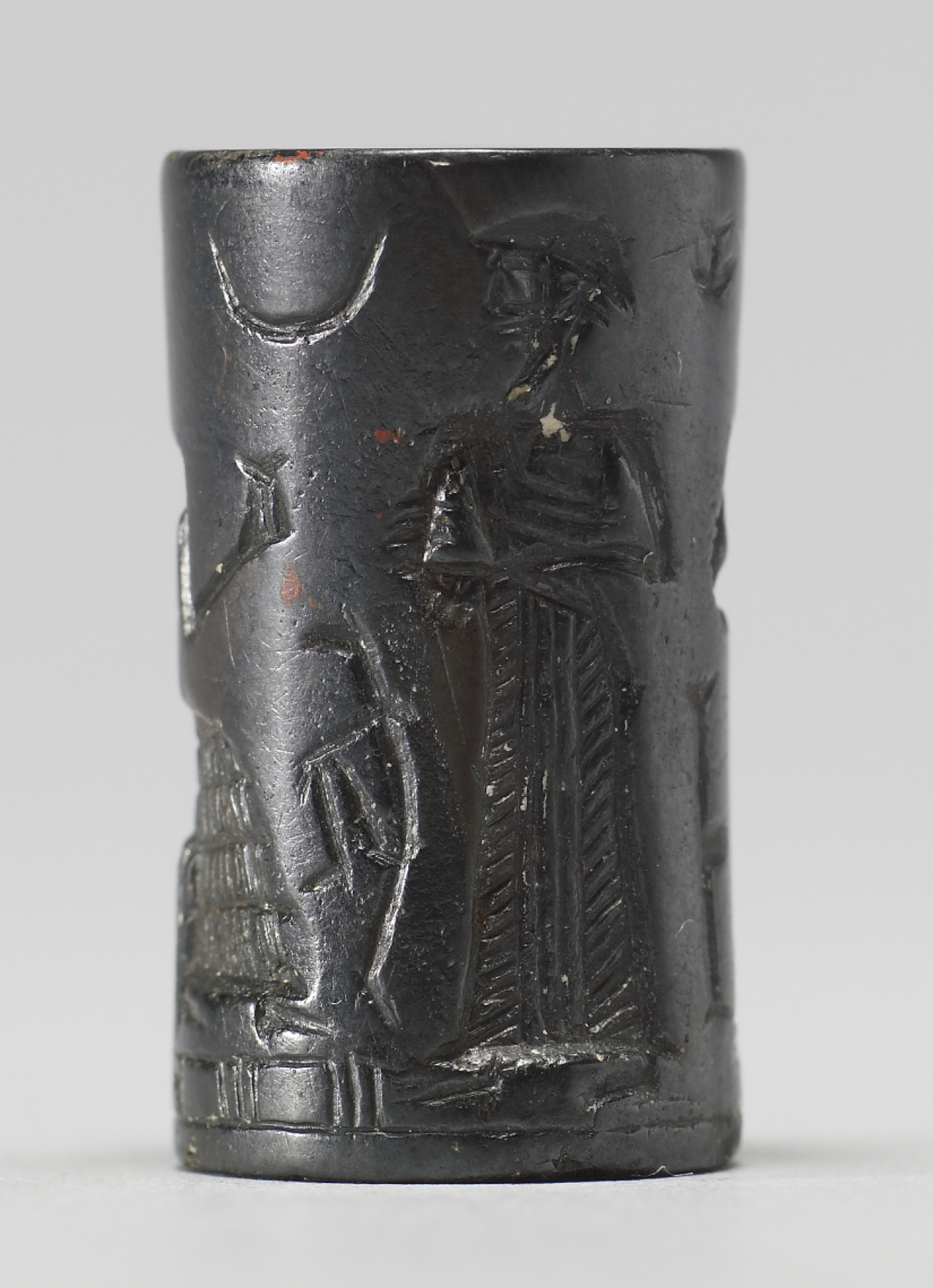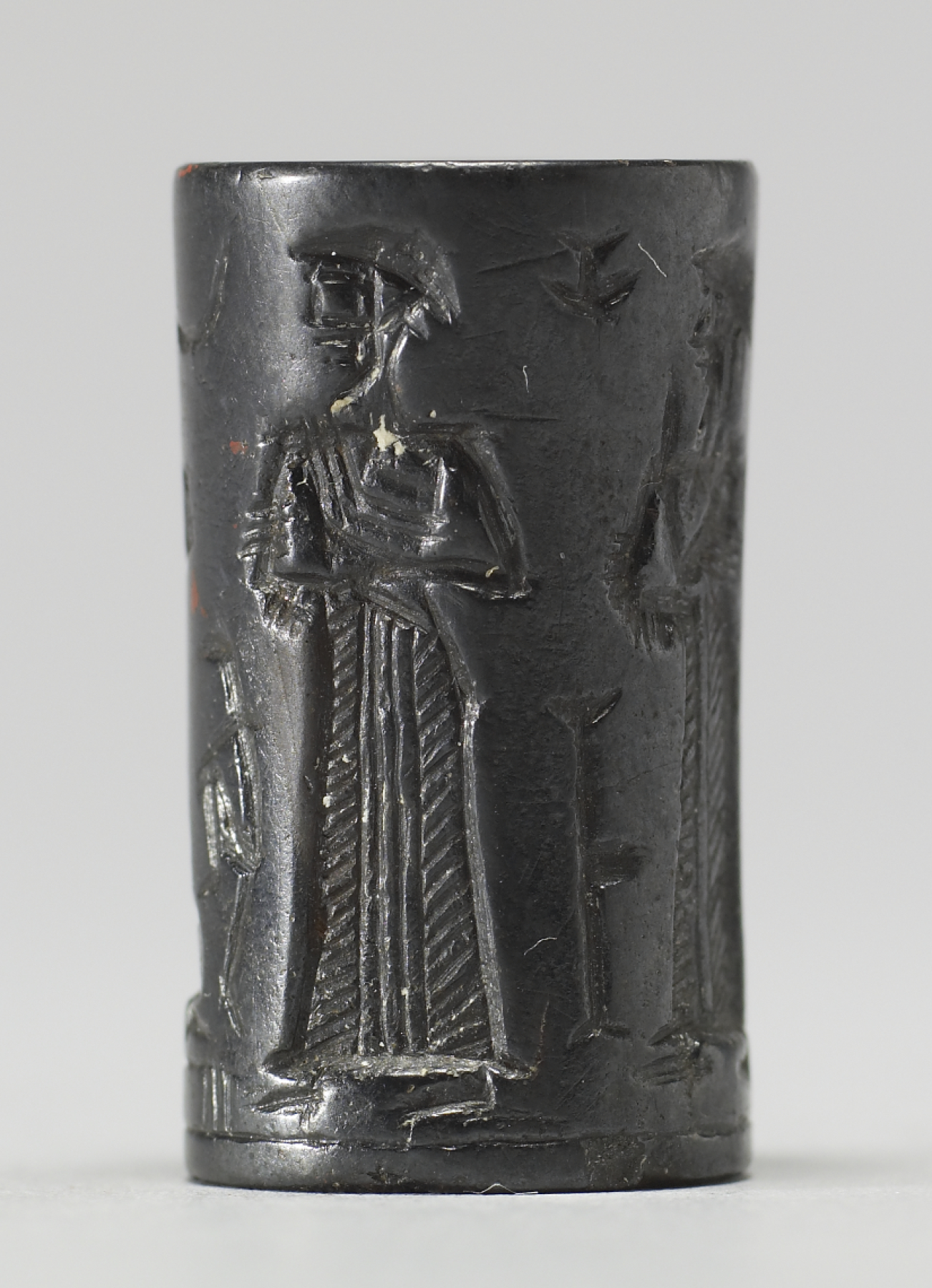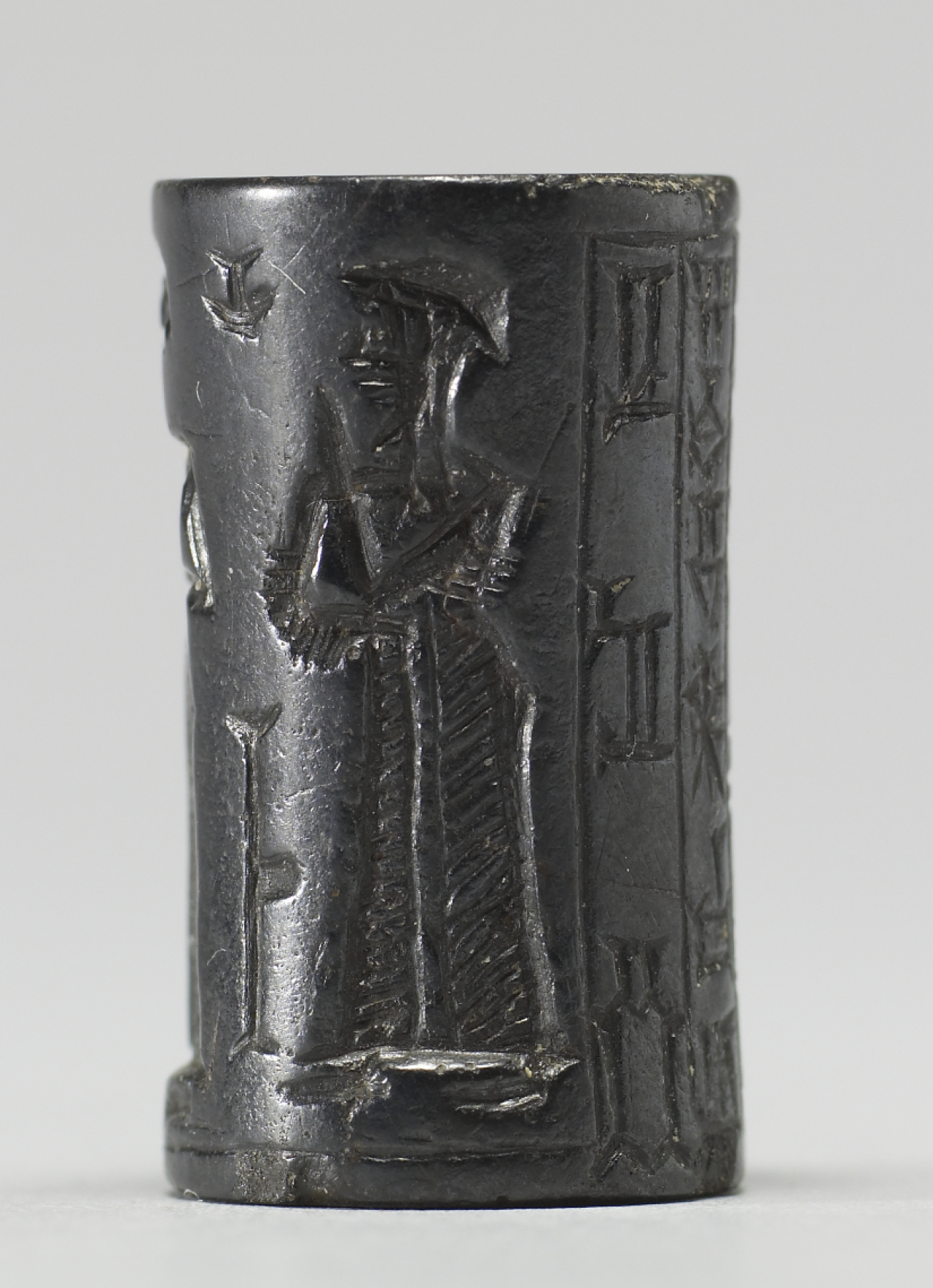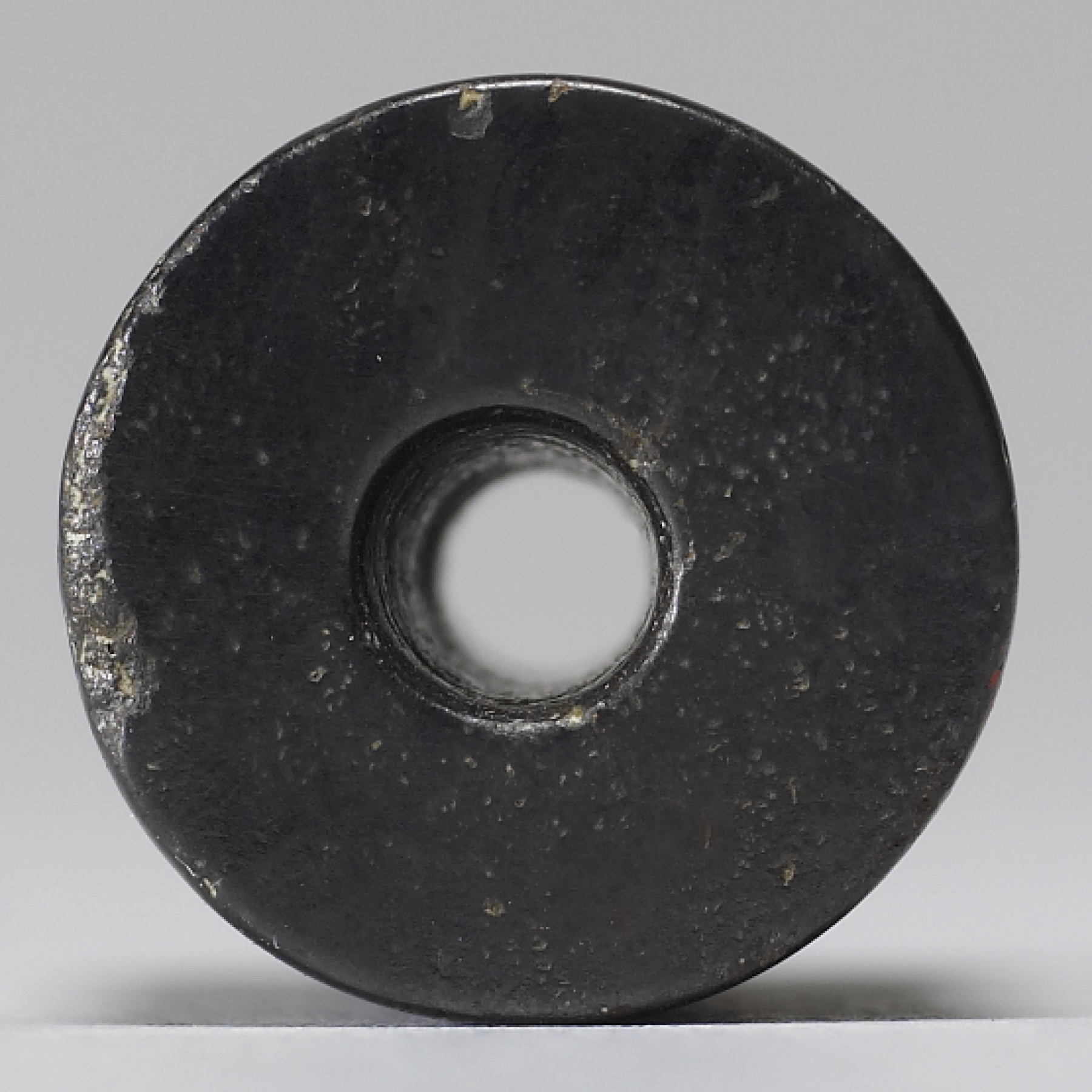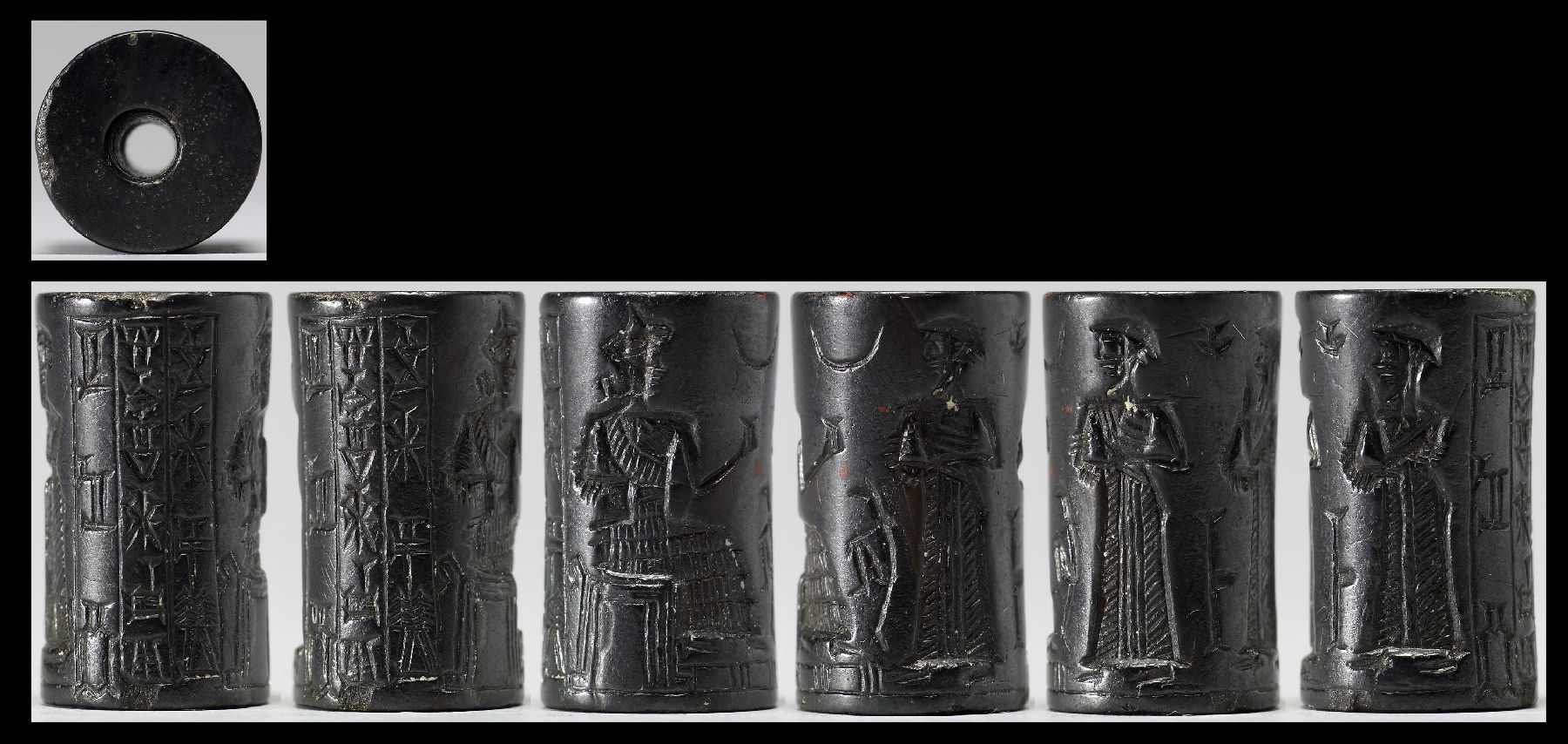Cylinder Seal with a Presentation Scene and an Inscription
(Ancient Near East )
The scene on this seal shows a seated deity wearing a horned crown and flounced robe, offering a cup to a standing figure facing him, also wearing a long robe. In the deity's other hand is what appears to be a boomerang. Between these two figures is a small dancing figure, and an inverted crescent is located in the field between them. A third figure with one arm raised stands behind the figure receiving the cup. Additionally, there is a cuneiform inscription in three registers incorporated into the scene.
Cylinder seals are cylindrical objects carved in reverse (intaglio) in order to leave raised impressions when rolled into clay. Seals were generally used to mark ownership, and they could act as official identifiers, like a signature, for individuals and institutions. A seal’s owner rolled impressions in wet clay to secure property such as baskets, letters, jars, and even rooms and buildings. This clay sealing prevented tampering because it had to be broken in order to access a safeguarded item. Cylinder seals were often made of durable material, usually stone, and most were drilled lengthwise so they could be strung and worn. A seal’s material and the images inscribed on the seal itself could be protective. The artistry and design might be appreciated and considered decorative as well. Cylinder seals were produced in the Near East beginning in the fourth millennium BCE and date to every period through the end of the first millennium BCE.
Inscription
Provenance
Provenance (from the French provenir, 'to come from/forth') is the chronology of the ownership, custody, or location of a historical object.
Henry Walters, Baltimore, [date and mode of acquisition unknown]; Sadie Jones (Mrs. Henry Walters), New York, 1931, by inheritance; Joseph Brummer, Paris and New York, 1941, by purchase; Walters Art Museum, 1941, by purchase.
Geographies
Mesopotamia (Place of Origin)
Measurements
H: 1 x Diam: 9/16 in. (2.5 x 1.4 cm)
Credit Line
Museum purchase [formerly part of the Walters Collection], 1941
Location in Museum
Not on view
Accession Number
In libraries, galleries, museums, and archives, an accession number is a unique identifier assigned to each object in the collection.
In libraries, galleries, museums, and archives, an accession number is a unique identifier assigned to each object in the collection.
42.795

